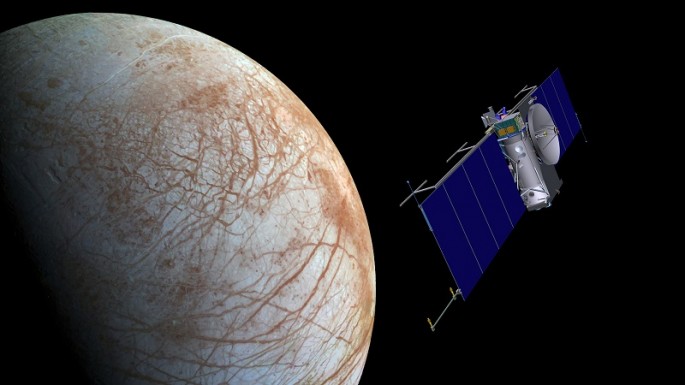NASA has been planning to send future space missions to Jupiter's moon Europa ever since the Galileo mission has detected water on one of Jupiter's larger moons in 1995, in order to search for life.
The space agency had peaked its interest on the icy moon when the Hubble Space Telescope was able to capture a series of images of water vapor shooting out into space from Europa's geysers, under its surface.
Now, NASA has announced that the space agency will finally push through a space mission to Europa in order to explore the icy alien world that could harbor life underneath its icy shell where a vast ocean is lurking with possible life.
According to NASA administrator John Grunsfeld, this is an exciting stage in our concept to the actual mission as we are taking crucial steps for the quest to find life beyond our planet. In the last 20 years, observations of Europa has provided pivotal clues for life where this is now the time to seek answers on the purpose of humanity in the universe.
According to Europa project manager Barry Goldstein from the Jet Propulsion Laboratory, this new probe will also help scientists decide if Europa has the capabilities of sustaining life or not with a radar instrument called REASON (Radar for Europa Assessment and Sounding: Ocean to Near-surfaces) to probe under the moon's icy ocean, hidden underneath its surface.
Last Wednesday, the space agency has announced that that the Europa mission has already reached the formulation phase which is a huge step for the finalization of the mission.
Goldstein explains the formulation phase with taking the next step from developing the design and logistical requirements of the mission and then determining the right requirements for searching for life on the icy moon.
In order to further propel NASA's Europa's mission, the space agency already added US $30 million for its 2016 budget. However, Goldstein also says that there are still many more loose ends to tie up before the space agency commences to create the technology such as the hardware and software for the mission.
The space probe is slated to be launched in the 2020s where the spacecraft will take seven years in transit to reach the moon.



























